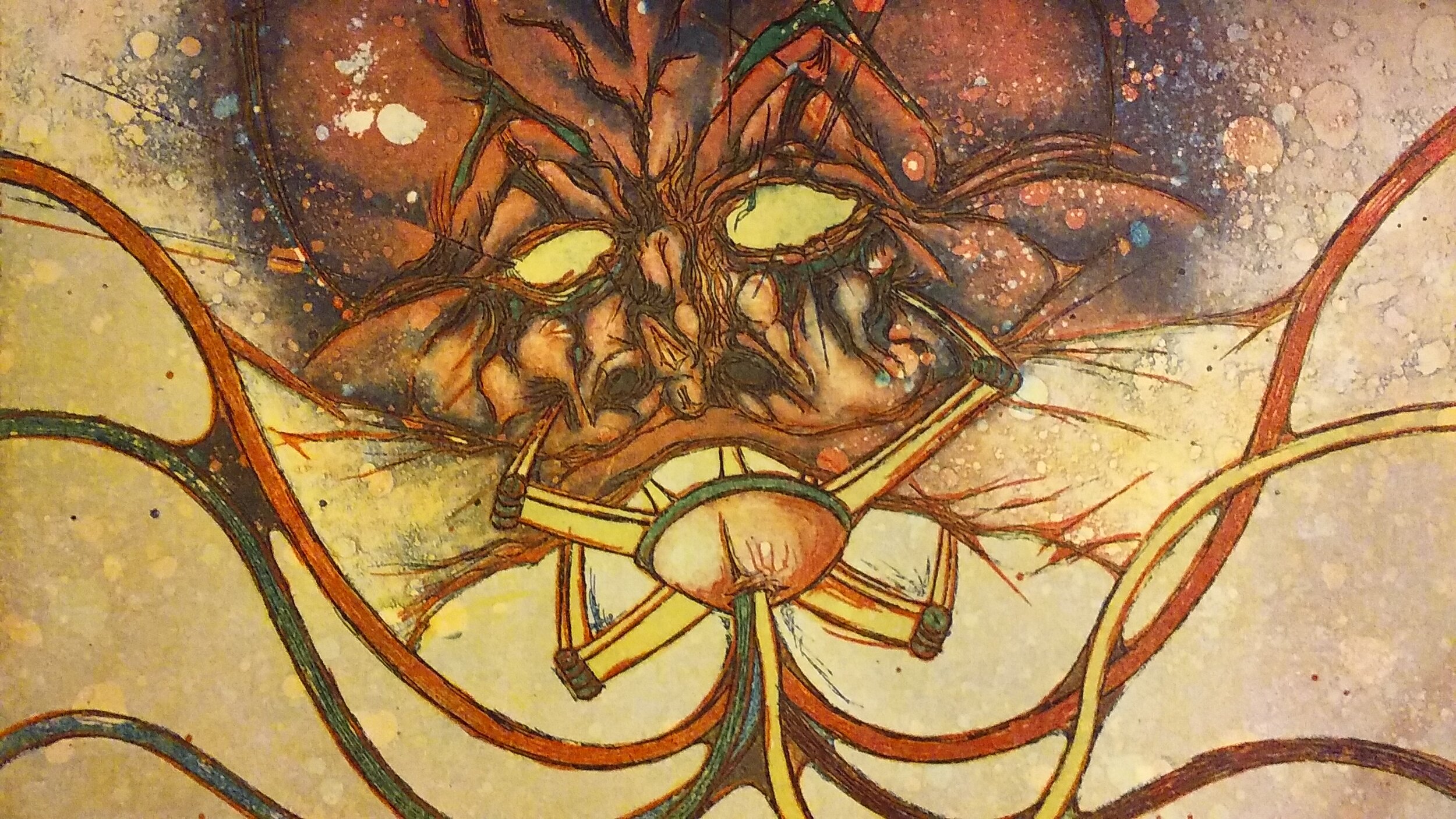About the Art
The Connection
This concept started as an investigation into the hubris of technological advancement and took inspiration from works such as “Harrison Bergeron,” Frankenstein, and The Matrix. The beginning pieces were their own conversation about a specific form of technology, like some people’s addiction to their phones, and how that advancement has impacted society and its implications for the future. I noticed these works focused on the interaction between technology and its users but not the creators and realized it was essential they be included when discussing the current state and potential trajectory of a civilization. This inclusion forced me to ask questions relating to the societal needs and distribution of these advancements and when researching the wants and necessities of certain subcultures, I found that the role of decision making comes with its own biases and prejudices inherent in human nature.
The Stress
The veins, wrinkles, and gore on my subjects relate to mental stress manifesting itself physically. The specific issues I’ve mentioned range from workplace discrimination, individual’s being put into socioeconomic stereotypes, to people being taken advantage of in different respects. My work is a representation of actual incidences relating to larger sociological themes in order to help the viewer relate to such episodes. As violent as the work looks, most of the actual occurrences don’t result in violence of any kind, but still take a toll on a person’s mental health. Our mental and physical health are interconnected, therefore when a person’s mind begins to suffer so does the body. Mental stresses, especially over an extended period of time, can result in physical discomfort, illness, and sickness. These roughneck subjects are a metaphor for the wear and tear on actually people’s physical bodies after non-violent yet still stressful altercations in order to drive home the message that just because a person’s struggle my not be physically trying in the moment, the mental capacity it takes to endure such trials can still take a toll on the human body.
This shift in the work is where the actual technology that was my initial focus became different groups in society as both are intended to structure and improve a culture. Both also mimic human nature because technology is only as good as its creators while any group will carry the collective individuals’ personal preferences. And so, the technology depicted in the work is now a representation of a group and the works as a whole are a metaphor for the tension between an individual within their respective group, organization, or community. Through the years the work has become more specific by referencing particular incidences and relating them to the larger sociological makeup of modern society to suggest that these are not just isolated incidences. The intent of the work is the make the audience aware of individuals with less representation’s intimate stories using futuristic subject matter as an allusion to predictions of earlier science fiction works coming to fruition.
The Color
My earliest works were mostly greyscale with the occasional tea stain. Color started as a way for me differentiate the layered parts of each machine. It was a way for me to color-code separate panels and wires and certain colors were reserved for flesh tones while others were used for mechanical components. The colors give the work a sense of depth and their brightness is a metaphor for these issues “coming to light.” As I added clothes and accessories to each figure it was a way to build them their own personality as way to connect with the audience. The colors of the machine and the figures’ style choices sometimes clash on purpose to signify that these two entities weren’t mean to be together similar to the machines’ function-over-form design.
The Style
The style of the line quality is a reference to the subject and machine breaking apart at the seams from their respective clash. I took a function-over-form approach for the aesthetic of the machines. With these machines representing different societal groups intended to run smoothly, I wanted the fictional machines to mirror this by looking like something engineered strictly to do its job and reach an end result, not to look pretty. I wanted the machines to look as though they could function in real world to mimic the real-world function of its respective group or organization without becoming a caricature. The style of the figures, apart from their natural features, was only an occasional earring or hairstyle in the beginning as most of the works were heads and faces. When I took on more of the human form, it gave me more space to customize while giving the viewer a better sense into the figure’s character so I try to detach myself as much as possible from my own preferences when crafting their wardrobes. Just like the color choices, there is a clash between the stark aesthetic of the machines and the personal style of the figures to represent the pull between a person’s individuality and anonymity.



